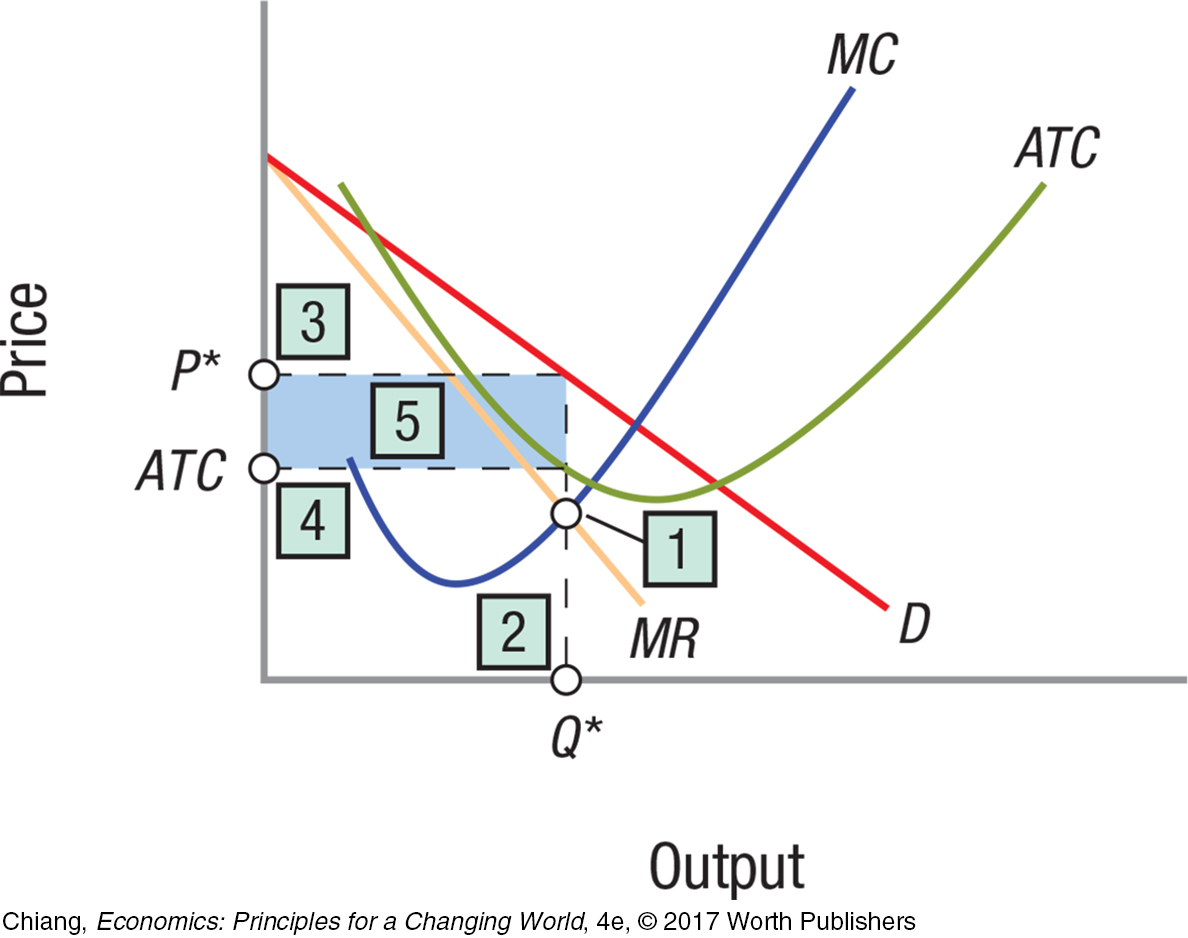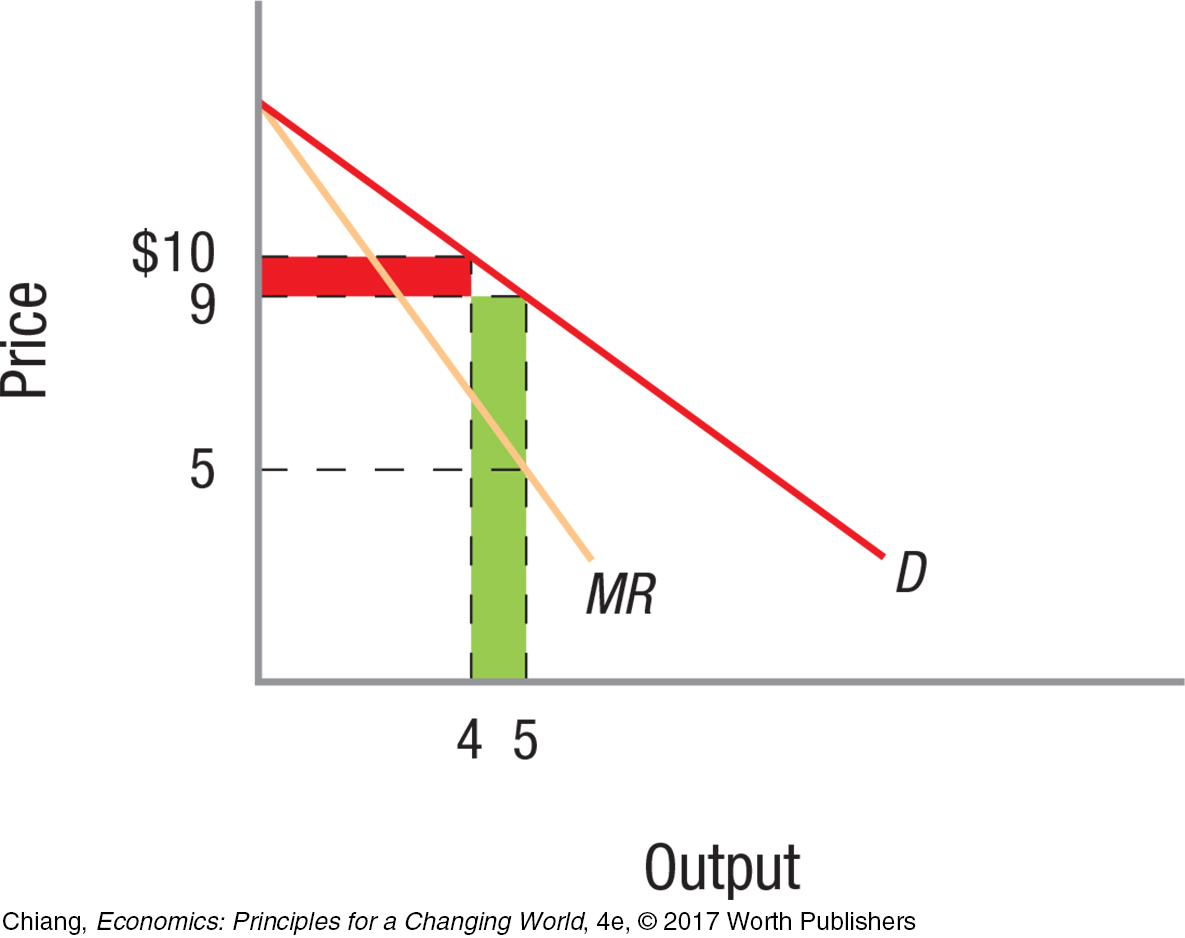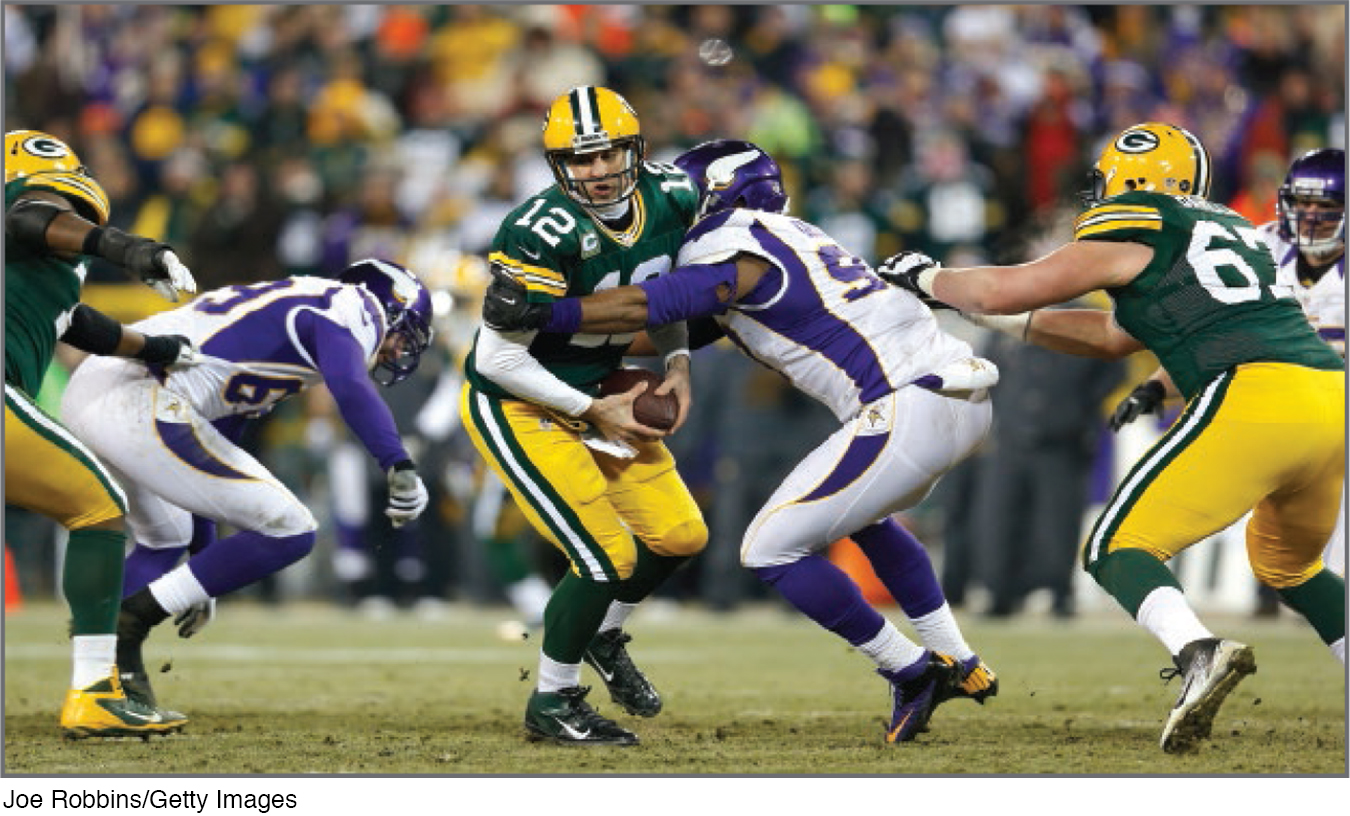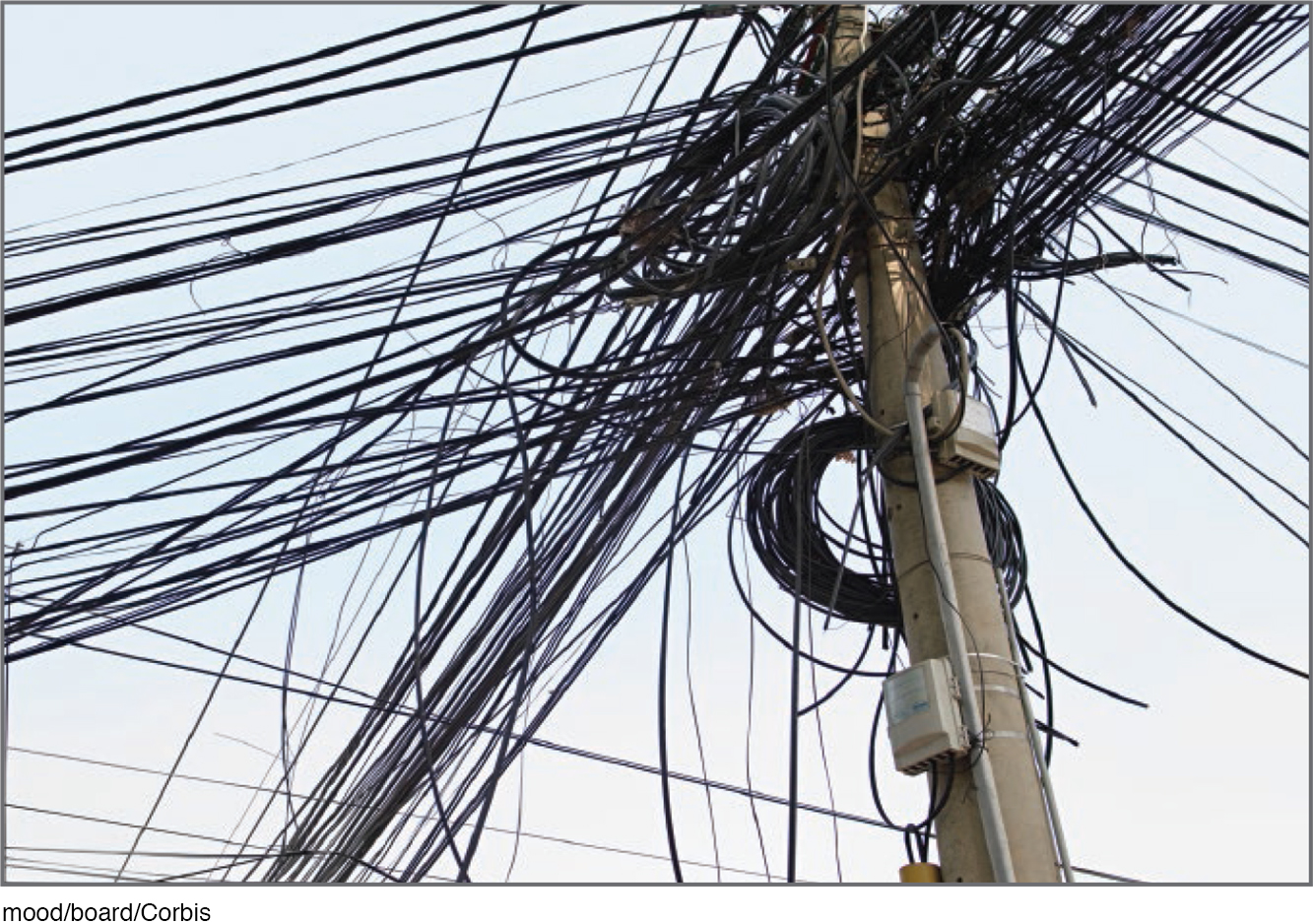chapter summary
chapter summary
Section 1 Monopoly Markets
9.1 A monopoly is a one-
9.2 Types of Barriers to Entry
Control over a significant factor of production: Occurs when a company owns a significant share of its key ingredient or input in production
Economies of scale: Occur when firms must incur large fixed costs before production can begin
Government protection: Patents and copyrights that provide an exclusive right to sell a product
9.3 Five Steps to Maximizing Profits for a Monopolist
Find MR = MC.
Find optimal quantity where MR = MC.
Find optimal price where quantity meets the demand curve.
Find average total cost at the optimal Q.
Find the profit = (P − ATC) × Q.

Marginal revenue is less than price for a monopoly: If a firm can sell 4 units at $10 but must drop price to $9 to sell 5 units, marginal revenue equals $5 because the seller loses a dollar from each of the previous 4 units (red area) but gains $9 from the sale (green area).

Just because a monopolist has no competitors doesn’t mean it always earns profits. Think of late-

Section 2 Comparing Monopoly and Competition
In a monopoly market, output is lower and price is higher compared to a competitive market due to the lack of competitors to the monopoly firm.
9.4 A firm with market power is more likely to engage in rent-

Section 3 Price Discrimination
Price discrimination is charging different prices for the same product in the attempt to grab more surplus from consumers.
Conditions for Price Discrimination to Work Best
Firm must have market power (i.e., cannot be a price taker).
Market can be segmented into different consumer groups.
Seller must be able to prevent arbitrage.
9.5 Three Forms of Price Discrimination
Perfect (first-
Second-
Third-

Section 4 Regulation and Antitrust
9.6 A natural monopoly has large economies of scale such that one firm is more efficient than multiple firms. The profit-

Antitrust laws are designed to promote competition and prevent monopolies from developing.
Two Major Antitrust Laws
9.7 Sherman Act of 1890: Outlawed trusts and cartels—
Clayton Act of 1914: Outlawed some forms of price discrimination and mergers that would significantly reduce competition.
Ways to Measure Market Power
Concentration ratios: Adding up the market shares of the 4 or 8 largest firms in an industry, and ranges from 0 to 100.
9.8 HHI index: Sum of the square of market shares of all firms in an industry, and ranges from 0 (perfect competition) to 10,000 (monopoly). HHI values over 2,500 are concentrated industries where mergers are likely to be challenged.

9.9 A contestable market looks like a monopoly but does not act like one because the threat of entry keeps prices low. Small airlines that serve unique routes still offer low prices if they fear entry by larger airlines.